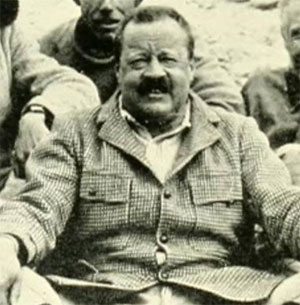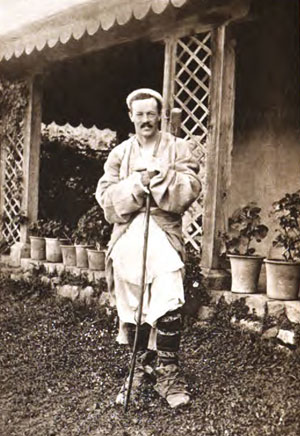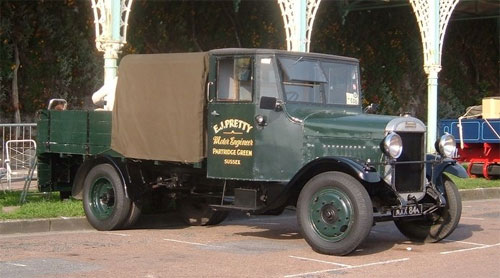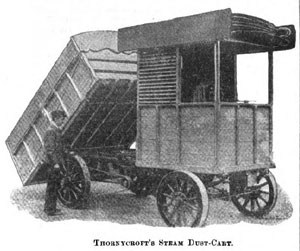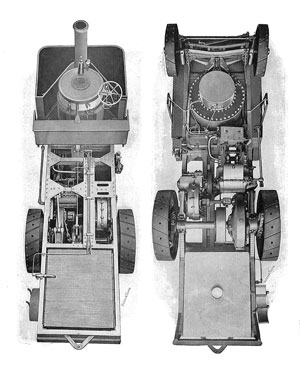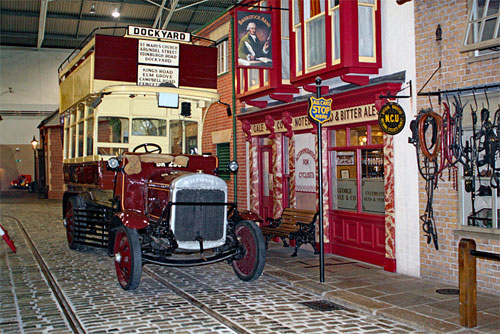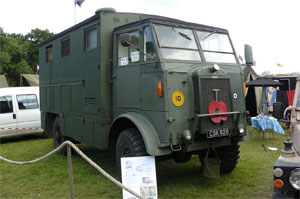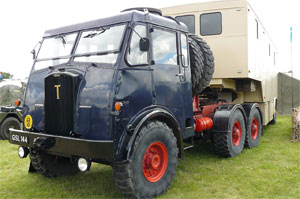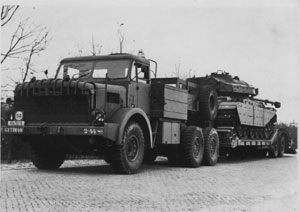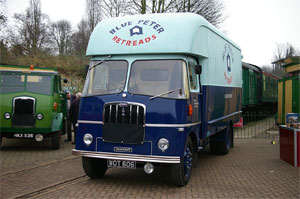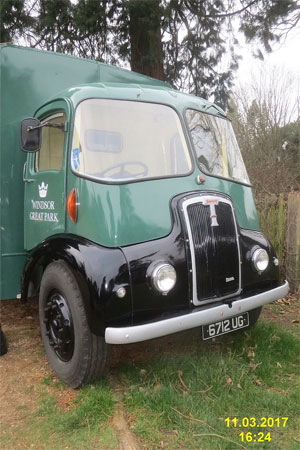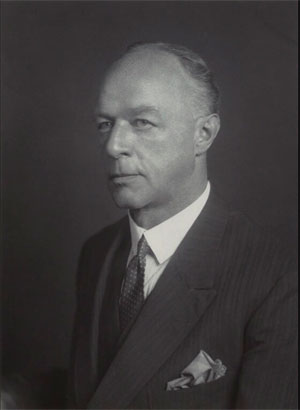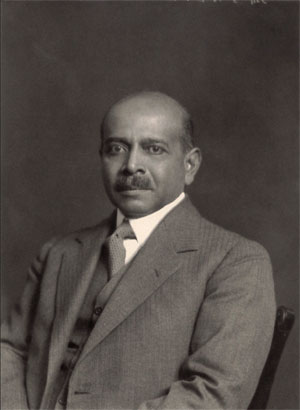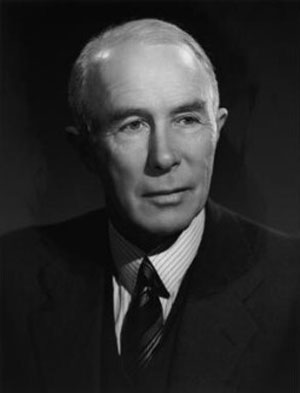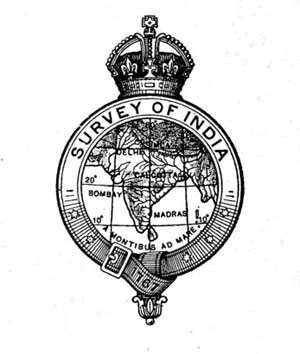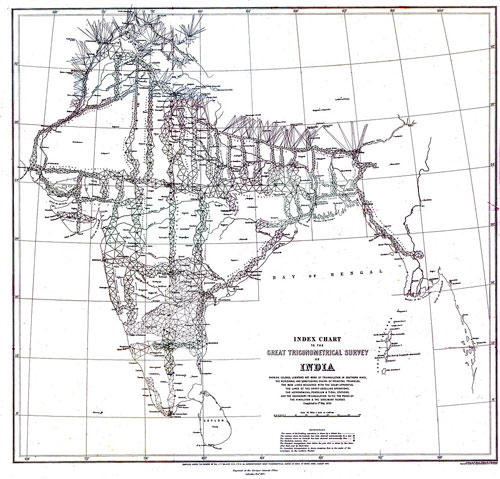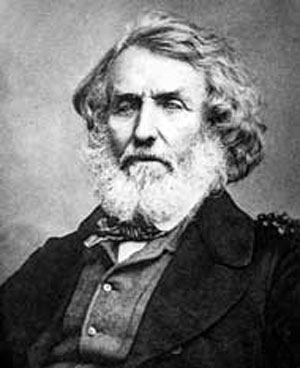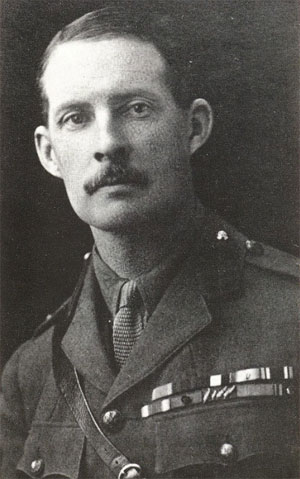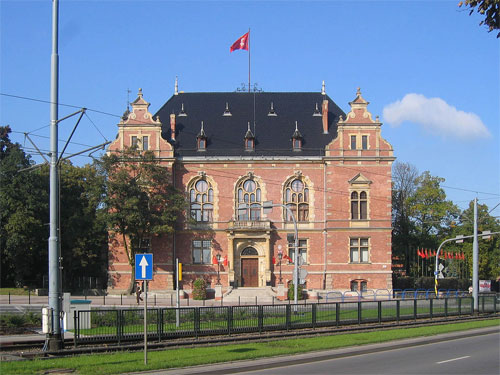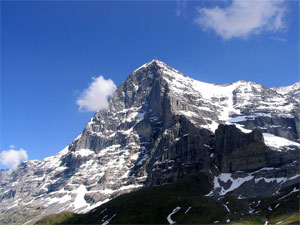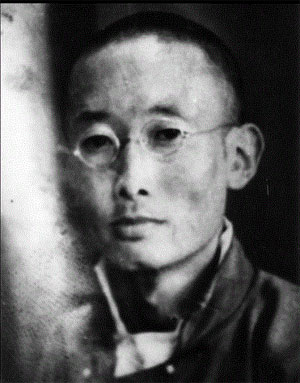Re: Freda Bedi, by Wikipedia
Brigadier Sir Edward Oliver Wheeler MC
by Wikipedia
Accessed: 2/2/20
Edward Oliver Wheeler
Born: April 18, 1890, Ottawa, Ontario, Canada
Died: March 19, 1962 (aged 71), Vernon, British Columbia, Canada
Allegiance: Canada
Service/branch: Corps of the Royal Engineers
Rank: Brigadier
Awards: He was Knighted in 1943, Military Cross, Croix de Chevalier de la Legion d'Honneur
Relations: Arthur Oliver Wheeler, father,
John Oliver Wheeler, son
Other work: mountain climber, surveyor
Brigadier Sir Edward Oliver Wheeler MC (April 18, 1890 – March 19, 1962) was a Canadian surveyor, mountain climber and soldier. Wheeler participated in the first topographical survey of Mount Everest in 1921.[1] As a Brigadier in the British Army he was appointed Surveyor General of India in 1941. He was knighted for the work he did surveying India. He was an accomplished mountain climber and on the 1921 expedition was one of the team to reach the 7000-metre North Col.
Early life
Edward Oliver Wheeler was the son of a surveyor and renowned alpinist, Arthur Oliver Wheeler a Dominion Land Surveyor, who co-founded the Alpine Club of Canada and mapped British Columbia’s Selkirk Mountains and the British Columbia-Alberta border.[2] His mother was Clara (née Macoun), daughter of Canadian botanist John Macoun. While still a teenager, he accompanied his father to the Selkirk Mountains and learned both how to climb and the Canadian method of photo-topography developed by Dr. Edouard Deville[3]. As a founding member of the Alpine Club of Canada, he guided new members on the initial climbs in the Rockies[4].
Education
He attended Trinity College School where he was chosen Head Boy. Having finished first on the admission exams to the Royal Military College of Canada in Kingston, Ontario, he attended that university for three years from 1907-1910[5]. He finished first of his class in all three years at RMC[6][7][8]. In his graduating year he was the Battalion Sergeant Major, the highest rank attainable by a Gentleman Cadet. He was given a choice of commissions in the British Army. He became a Royal Engineer and attended the School of Military Engineering in Chatham, UK[9]. Upon this graduation he was posted to the 1st King George V's Own Bengal Sappers and Miners.
Career
During the First World War he served with 1st King George V's Own Bengal Sappers and Miners as part of the Indian Expedition Forces in 1914 and with the same forces in Mesopotamia campaign 1916-19. He was Mentioned in Despatches 7 times for actions both in France and Mesopotamia[10][11][12][13][14][15][16]. He was awarded the Military Cross[17] and a Croix de Chevalier de la Legion d'Honneur[18].
In 1919, he was seconded to the Survey of India. During this time he was a member of the 1921 Everest reconnaissance expedition, using photographic surveying techniques.[19] His exploration of the East Rongbuk glacier led him on 3 August 1921 to realise that this provided the key to a viable route to the summit of Everest. He was one of the climbing team to reach the North Col.[20]
He married Dorothea Sophia Danielson in 1921. His son John Oliver Wheeler (1925–2015) was an award-winning Canadian geologist with the Geological Survey of Canada.
Edward came to Canada on sick leave in 1922 but returned to India in 1923. During this stay he toured Canada discussing his adventure on Everest including an Address to the Empire Club of Canada[21]. In 1925 further convalescing in Canada was necessary after another operation in London. He then returned to India. He rose through the positions of Superintendent (1927), Director (1939) and finally to Surveyor-General of India (1941–1947). He was knighted in 1943[22].
Personal life
Upon his retirement, he returned to Canada with his wife, and lived in Lavington, near Vernon. He was active with the Alpine Club of Canada. From 1950 to 1954, Wheeler served as President of the Alpine Club of Canada. He was a life membership of the Alpine Club (UK) and a member of the American Alpine Club.
Brigadier Sir Edward Oliver Wheeler died following a stroke.
Publications
• Wheeler, E.O. "Mt. Babel and Chimney Peak." The Canadian Alpine Journal, vol. 3, The Alpine Club of Canada. Banff, Alberta. 1911. p. 73-79.
• Wheeler, E.O. "Mount Elkhorn, Strathcona Park." The Canadian Alpine Journal, vol. 5, The Alpine Club of Canada. Banff, Alberta. 1913. p. 44-48.
• Wheeler, E.O. "Traverse of Terrapin and West Ridge of Magog." The Canadian Alpine Journal, vol. 12, The Alpine Club of Canada. Banff, Alberta. 1921-22. p. 53-55.
• Wheeler, E. O. "The Photographic Survey", Mount Everest the Reconnaissance, Edward Arnold, London, 1922. p. 329-337.
• Wheeler, E. O. "The "Canadian" Photo-topographical Method of Survey", The Royal Engineers Journal, vol. 35, The Institution of Royal Engineers, Chatham, UK , March 1922. p. 177-185.
• Wheeler, E.O. "Mt. Everest Expedition/1921." The Canadian Alpine Journal, vol. 13. The Alpine Club of Canada. Banff, Alberta. 1923. p. 1-25.
• Wheeler, E.O. "ACC Golden Jubilee." The Canadian Alpine Journal, vol. 39, The Alpine Club of Canada. Banff, Alberta. 1956. p. 3-24.
• Wheeler, E. O. The Survey of India during War and Early Reconstruction 1939-1946, The Surveyor General of India, Dehra Dun, India, 1955.
References
1. Canadian geographer conquered Mount Everest in ‘epic quest’ National Post (Canada) 13 Nov. 2011
2. Arthur Oliver Wheeler http://www.pc.gc.ca/docs/v-g/pm-mp/lhn- ... eler_e.asp
3. Wheeler, A. O. The Selkirk Range, Department of the Interior, Government Printing Bureau, Ottawa 1905,
4. Report of Chief Mountaineer, Canadian Alpine Journal, Vol. 1 No 2, pp 329-334
5. No. 758 Brigadier Sir Edward Oliver Wheeler, Kt MC, "Royal Military College of Canada Review, Log of the Stone Frigate", Kingston, Ontario,1963
6. Report of the Militia Council for the Dominion of Canada for the Fiscal Year Ending March 31 1908, Printed by Order of Parliament, Ottawa 1909
7. Report of the Militia Council for the Dominion of Canada for the Fiscal Year Ending March 31 1909, Printed by Order of Parliament, Ottawa 1909
8. Report of the Militia Council for the Dominion of Canada for the Fiscal Year Ending March 31 1910, Printed by Order of Parliament, Ottawa 1910
9. Recorded in The Gazette (London Gazette), issue 28409, 23 August 1910
10. Recorded in The Gazette (London Gazette), issue 29072, 16 February 1915
11. Recorded in The Gazette (London Gazette), issue 29200, 18 June 1915
12. Recorded in The Gazette (London Gazette), issue 29422, 31 December 1915
13. Recorded in The Gazette (London Gazette), issue 29789, 17 October 1916
14. Recorded in The Gazette (London Gazette), issue 30867, 23 August 1918
15. Recorded in The Gazette (London Gazette), issue 31195, 18 February 1919
16. Recorded in The Gazette (London Gazette), issue 31386, 3 June 1919
17. Recorded in The Gazette (London Gazette), issue 29438, 11 January 1916
18. Recorded in The Gazette (London Gazette), issue 29486, 24 February 1916
19. McMillan, Margaret, "Risk Taking", Massey Lecture Series, Victoria, British Columbia. broadcast on Ideas, August 15 3016,9:00 p.m. EST. CBC Radio
20. Wade Davis - Into the silence, Vintage Books, London, 2012.
21. http://speeches.empireclub.org/62546/data?n=1
22. Recorded in The Gazette (London Gazette), issue 35841, 1 January 1943
Further reading
• In Memoriam. The Canadian Alpine Journal. Vol. 45. The Alpine Club of Canada. Banff, Alberta. 1962. p. 160-163.
• Wheeler, A.O. "The Alpine Club of Canada in Strathcona Park." The Canadian Alpine Journal. Vol. 5. The Alpine Club of Canada. Banff, Alberta. 1913. p. 82-95.
**********************************************************
Sir Edward O. Wheeler
by Historic Camera
Accessed: 2/2/20
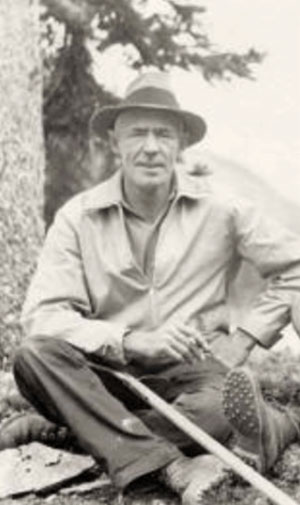
Edward Oliver Wheeler was born to Arthur and Clara Macoun Wheeler on April 18, 1890 in Ottawa, Canada. His grandfather, John Macoun, was a respected botanist and his father was a surveyor and mountain-climbing enthusiast who founded the Alpine Club of Canada. His own passion for the mountains began when he accompanied his father to survey the Selkirk Range, and would spend subsequent school holidays as his father's assistant. He received his education in Ottawa's public school system, and attended Ontario's Trinity College. After graduating from Kingston's Royal Military Academy, Cadet Wheeler garnered the highest grades ever received by an officer in training, was awarded the Governor General's medal and the Sword of Honor. At the age of 20, he received a commission to the Royal Canadian Engineers, and was deployed to India in 1913. The young officer saw considerable action during World War I, serving with King George V's Bengal Sappers and Miners in 1915, and fought in Mesopotamia (now Iraq) from 1916-1918. For his efforts, he was awarded the Military Cross, and became a member of the French Legion of Honor.
After the war, he returned to India, working as a surveyor, and in 1921, married Dorothea Danielson. Their son John later became a celebrated geologist. Captain Wheeler's mountain-climbing prowess and skills as a map maker led to an invitation to join the first British Expedition to Mount Everest. Under the leadership of Colonel Charles Howard-Bury, Captain Wheeler, along with other experienced climbers like George Leigh Mallory (who would die tragically in 1924 on another Everest Expedition), investigated various routes to determine the most expedient approach, which Captain Wheeler's group determined to be the East Rongbuk Glacier that led to the North Col. He constructed the first map of Mount Everest and surrounding area, and also created a photographic record of the expedition. His daily travel kit included a cumbersome knapsack, which consisted of a camera, 11 glass plates, notebooks and pencils, weighing about 30 pounds; a tripod; disassembled theodolite telescope housed in a wooden box; along with spare plate holders, extra glass negatives, tape measures, and stone-filled bags to steady the tripod, tipped the scales at 100 pounds. Over the next five months, Captain Wheeler would capture and develop 240 images of the majestic Everest.
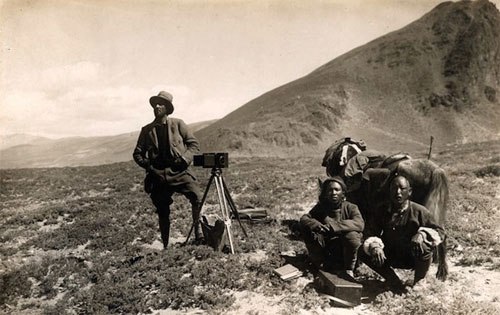
Captain Wheeler made a triumphant returned to India, but was considerably weakened by illness, resulting from the high altitudes and drinking contaminated water. After regaining his health, he was named Deputy Superintendent of the Survey of India, promoted to Major, and eventually achieved the rank of Brigadier General. He was knighted in 1943, and though he was eligible for retirement two years' later, he stayed with the Survey of India, before finally retiring and returning to Canada in 1947. He and his wife settled in Lavington, British Columbia, where he resumed his mountain climbing activities, and served as President of the Alpine Club of Canada from 1950 until 1954. On March 18, 1962, 71-year-old Sir Edward Oliver Wheeler suffered a massive stroke, and died the next day. He is fondly remembered for his military service, as a mountain climber and surveyor, and for his landmark expedition photographs. Exhibiting a gift for understatement, Sir Wheeler once observed, "I was in this camp for five days; most of them spent huddled under rocks waiting for the clouds to lift. I had one beautiful day… and got some very nice photographs of Mount Everest and its West ridge." Those "very nice photographs" remain some of the most impressive and breathtaking panoramic views of Mount Everest well into the twenty-first century.
_______________
References
2006 Among the Great Hills: Three Generations of Wheelers by R.W. Sandford (Alberta, Canada: The Alpine Club of Canada), pp. 4, 20-21.
2004 Canada’s Everest? Rethinking the First Ascent of Mount Logan and the Politics of Nationhood, 1925 by Zac Robinson and PearlAnn Reichwein Sport History Review, Vol. XXXV, pp. 95-121.
2007 The Canadian Rockies: Pioneers, Legends and True Tales by Roger W. Patillo (Aldergrove, British Columbia: Amberlea Press), p. 285.
2001 Edward Oliver Wheeler (URL: http://www.beyondnootka.com/biographies/e_wheeler.html).
2009 West Rongbuk (URL: http://more.glacierworks.org/glacier/we ... uk-glacier).
2010 Yale University: Environment 360 (URL:
http://e360.yale.edu/content/images/071 ... -team.html).
by Wikipedia
Accessed: 2/2/20
The founding members [of the Himalayan Club] were:[2]
• Major Edward Oliver Wheeler of the Survey of India
-- The Himalayan Club, by Wikipedia
Edward Oliver Wheeler
Born: April 18, 1890, Ottawa, Ontario, Canada
Died: March 19, 1962 (aged 71), Vernon, British Columbia, Canada
Allegiance: Canada
Service/branch: Corps of the Royal Engineers
Rank: Brigadier
Awards: He was Knighted in 1943, Military Cross, Croix de Chevalier de la Legion d'Honneur
Relations: Arthur Oliver Wheeler, father,
John Oliver Wheeler, son
Other work: mountain climber, surveyor
Brigadier Sir Edward Oliver Wheeler MC (April 18, 1890 – March 19, 1962) was a Canadian surveyor, mountain climber and soldier. Wheeler participated in the first topographical survey of Mount Everest in 1921.[1] As a Brigadier in the British Army he was appointed Surveyor General of India in 1941. He was knighted for the work he did surveying India. He was an accomplished mountain climber and on the 1921 expedition was one of the team to reach the 7000-metre North Col.
Early life
Edward Oliver Wheeler was the son of a surveyor and renowned alpinist, Arthur Oliver Wheeler a Dominion Land Surveyor, who co-founded the Alpine Club of Canada and mapped British Columbia’s Selkirk Mountains and the British Columbia-Alberta border.[2] His mother was Clara (née Macoun), daughter of Canadian botanist John Macoun. While still a teenager, he accompanied his father to the Selkirk Mountains and learned both how to climb and the Canadian method of photo-topography developed by Dr. Edouard Deville[3]. As a founding member of the Alpine Club of Canada, he guided new members on the initial climbs in the Rockies[4].
Education
He attended Trinity College School where he was chosen Head Boy. Having finished first on the admission exams to the Royal Military College of Canada in Kingston, Ontario, he attended that university for three years from 1907-1910[5]. He finished first of his class in all three years at RMC[6][7][8]. In his graduating year he was the Battalion Sergeant Major, the highest rank attainable by a Gentleman Cadet. He was given a choice of commissions in the British Army. He became a Royal Engineer and attended the School of Military Engineering in Chatham, UK[9]. Upon this graduation he was posted to the 1st King George V's Own Bengal Sappers and Miners.
Career
During the First World War he served with 1st King George V's Own Bengal Sappers and Miners as part of the Indian Expedition Forces in 1914 and with the same forces in Mesopotamia campaign 1916-19. He was Mentioned in Despatches 7 times for actions both in France and Mesopotamia[10][11][12][13][14][15][16]. He was awarded the Military Cross[17] and a Croix de Chevalier de la Legion d'Honneur[18].
In 1919, he was seconded to the Survey of India. During this time he was a member of the 1921 Everest reconnaissance expedition, using photographic surveying techniques.[19] His exploration of the East Rongbuk glacier led him on 3 August 1921 to realise that this provided the key to a viable route to the summit of Everest. He was one of the climbing team to reach the North Col.[20]
He married Dorothea Sophia Danielson in 1921. His son John Oliver Wheeler (1925–2015) was an award-winning Canadian geologist with the Geological Survey of Canada.
Edward came to Canada on sick leave in 1922 but returned to India in 1923. During this stay he toured Canada discussing his adventure on Everest including an Address to the Empire Club of Canada[21]. In 1925 further convalescing in Canada was necessary after another operation in London. He then returned to India. He rose through the positions of Superintendent (1927), Director (1939) and finally to Surveyor-General of India (1941–1947). He was knighted in 1943[22].
Personal life
Upon his retirement, he returned to Canada with his wife, and lived in Lavington, near Vernon. He was active with the Alpine Club of Canada. From 1950 to 1954, Wheeler served as President of the Alpine Club of Canada. He was a life membership of the Alpine Club (UK) and a member of the American Alpine Club.
Brigadier Sir Edward Oliver Wheeler died following a stroke.
Mountain Ascents of Note
Ascent / Year / Significance
Mount Hector and Observation Peak in Alberta, Canada / 1903 / --
Hungabee Mountain on the Alberta, British Columbia border, Canada / 1909 / with Val Fynn
Mount Babel in Alberta, Canada / 1910 / the first ascent
Mount Tupper and Mount Sir Donald in Glacier National Park in Canadian Rockies / 1910 / guideless climbs
Pyrenees Mountains and Lakes District in southwest Europe / 1911 / with his father, Arthur Oliver Wheeler
Strathcona Provincial Park on Vancouver Island, British Columbia, Canada / 1912 / led the Expedition, first ascent of Elkhorn Mountain
Mount Assiniboine on the Alberta, British Columbia border/ 1920 / planned, erected, and directed base camp
Mount Everest, on the Nepal, Tibet border / 1921 / mapped possible mountain climbing routes (e.g. northern, eastern and western sides, Tibetan Plateau and East Rongbuk Glacier) under Colonel Charles Howard-Bury
Publications
• Wheeler, E.O. "Mt. Babel and Chimney Peak." The Canadian Alpine Journal, vol. 3, The Alpine Club of Canada. Banff, Alberta. 1911. p. 73-79.
• Wheeler, E.O. "Mount Elkhorn, Strathcona Park." The Canadian Alpine Journal, vol. 5, The Alpine Club of Canada. Banff, Alberta. 1913. p. 44-48.
• Wheeler, E.O. "Traverse of Terrapin and West Ridge of Magog." The Canadian Alpine Journal, vol. 12, The Alpine Club of Canada. Banff, Alberta. 1921-22. p. 53-55.
• Wheeler, E. O. "The Photographic Survey", Mount Everest the Reconnaissance, Edward Arnold, London, 1922. p. 329-337.
• Wheeler, E. O. "The "Canadian" Photo-topographical Method of Survey", The Royal Engineers Journal, vol. 35, The Institution of Royal Engineers, Chatham, UK , March 1922. p. 177-185.
• Wheeler, E.O. "Mt. Everest Expedition/1921." The Canadian Alpine Journal, vol. 13. The Alpine Club of Canada. Banff, Alberta. 1923. p. 1-25.
• Wheeler, E.O. "ACC Golden Jubilee." The Canadian Alpine Journal, vol. 39, The Alpine Club of Canada. Banff, Alberta. 1956. p. 3-24.
• Wheeler, E. O. The Survey of India during War and Early Reconstruction 1939-1946, The Surveyor General of India, Dehra Dun, India, 1955.
References
1. Canadian geographer conquered Mount Everest in ‘epic quest’ National Post (Canada) 13 Nov. 2011
2. Arthur Oliver Wheeler http://www.pc.gc.ca/docs/v-g/pm-mp/lhn- ... eler_e.asp
3. Wheeler, A. O. The Selkirk Range, Department of the Interior, Government Printing Bureau, Ottawa 1905,
4. Report of Chief Mountaineer, Canadian Alpine Journal, Vol. 1 No 2, pp 329-334
5. No. 758 Brigadier Sir Edward Oliver Wheeler, Kt MC, "Royal Military College of Canada Review, Log of the Stone Frigate", Kingston, Ontario,1963
6. Report of the Militia Council for the Dominion of Canada for the Fiscal Year Ending March 31 1908, Printed by Order of Parliament, Ottawa 1909
7. Report of the Militia Council for the Dominion of Canada for the Fiscal Year Ending March 31 1909, Printed by Order of Parliament, Ottawa 1909
8. Report of the Militia Council for the Dominion of Canada for the Fiscal Year Ending March 31 1910, Printed by Order of Parliament, Ottawa 1910
9. Recorded in The Gazette (London Gazette), issue 28409, 23 August 1910
10. Recorded in The Gazette (London Gazette), issue 29072, 16 February 1915
11. Recorded in The Gazette (London Gazette), issue 29200, 18 June 1915
12. Recorded in The Gazette (London Gazette), issue 29422, 31 December 1915
13. Recorded in The Gazette (London Gazette), issue 29789, 17 October 1916
14. Recorded in The Gazette (London Gazette), issue 30867, 23 August 1918
15. Recorded in The Gazette (London Gazette), issue 31195, 18 February 1919
16. Recorded in The Gazette (London Gazette), issue 31386, 3 June 1919
17. Recorded in The Gazette (London Gazette), issue 29438, 11 January 1916
18. Recorded in The Gazette (London Gazette), issue 29486, 24 February 1916
19. McMillan, Margaret, "Risk Taking", Massey Lecture Series, Victoria, British Columbia. broadcast on Ideas, August 15 3016,9:00 p.m. EST. CBC Radio
20. Wade Davis - Into the silence, Vintage Books, London, 2012.
21. http://speeches.empireclub.org/62546/data?n=1
22. Recorded in The Gazette (London Gazette), issue 35841, 1 January 1943
Further reading
• In Memoriam. The Canadian Alpine Journal. Vol. 45. The Alpine Club of Canada. Banff, Alberta. 1962. p. 160-163.
• Wheeler, A.O. "The Alpine Club of Canada in Strathcona Park." The Canadian Alpine Journal. Vol. 5. The Alpine Club of Canada. Banff, Alberta. 1913. p. 82-95.
**********************************************************
Sir Edward O. Wheeler
by Historic Camera
Accessed: 2/2/20

Edward Oliver Wheeler was born to Arthur and Clara Macoun Wheeler on April 18, 1890 in Ottawa, Canada. His grandfather, John Macoun, was a respected botanist and his father was a surveyor and mountain-climbing enthusiast who founded the Alpine Club of Canada. His own passion for the mountains began when he accompanied his father to survey the Selkirk Range, and would spend subsequent school holidays as his father's assistant. He received his education in Ottawa's public school system, and attended Ontario's Trinity College. After graduating from Kingston's Royal Military Academy, Cadet Wheeler garnered the highest grades ever received by an officer in training, was awarded the Governor General's medal and the Sword of Honor. At the age of 20, he received a commission to the Royal Canadian Engineers, and was deployed to India in 1913. The young officer saw considerable action during World War I, serving with King George V's Bengal Sappers and Miners in 1915, and fought in Mesopotamia (now Iraq) from 1916-1918. For his efforts, he was awarded the Military Cross, and became a member of the French Legion of Honor.
After the war, he returned to India, working as a surveyor, and in 1921, married Dorothea Danielson. Their son John later became a celebrated geologist. Captain Wheeler's mountain-climbing prowess and skills as a map maker led to an invitation to join the first British Expedition to Mount Everest. Under the leadership of Colonel Charles Howard-Bury, Captain Wheeler, along with other experienced climbers like George Leigh Mallory (who would die tragically in 1924 on another Everest Expedition), investigated various routes to determine the most expedient approach, which Captain Wheeler's group determined to be the East Rongbuk Glacier that led to the North Col. He constructed the first map of Mount Everest and surrounding area, and also created a photographic record of the expedition. His daily travel kit included a cumbersome knapsack, which consisted of a camera, 11 glass plates, notebooks and pencils, weighing about 30 pounds; a tripod; disassembled theodolite telescope housed in a wooden box; along with spare plate holders, extra glass negatives, tape measures, and stone-filled bags to steady the tripod, tipped the scales at 100 pounds. Over the next five months, Captain Wheeler would capture and develop 240 images of the majestic Everest.

Captain Wheeler made a triumphant returned to India, but was considerably weakened by illness, resulting from the high altitudes and drinking contaminated water. After regaining his health, he was named Deputy Superintendent of the Survey of India, promoted to Major, and eventually achieved the rank of Brigadier General. He was knighted in 1943, and though he was eligible for retirement two years' later, he stayed with the Survey of India, before finally retiring and returning to Canada in 1947. He and his wife settled in Lavington, British Columbia, where he resumed his mountain climbing activities, and served as President of the Alpine Club of Canada from 1950 until 1954. On March 18, 1962, 71-year-old Sir Edward Oliver Wheeler suffered a massive stroke, and died the next day. He is fondly remembered for his military service, as a mountain climber and surveyor, and for his landmark expedition photographs. Exhibiting a gift for understatement, Sir Wheeler once observed, "I was in this camp for five days; most of them spent huddled under rocks waiting for the clouds to lift. I had one beautiful day… and got some very nice photographs of Mount Everest and its West ridge." Those "very nice photographs" remain some of the most impressive and breathtaking panoramic views of Mount Everest well into the twenty-first century.
_______________
References
2006 Among the Great Hills: Three Generations of Wheelers by R.W. Sandford (Alberta, Canada: The Alpine Club of Canada), pp. 4, 20-21.
2004 Canada’s Everest? Rethinking the First Ascent of Mount Logan and the Politics of Nationhood, 1925 by Zac Robinson and PearlAnn Reichwein Sport History Review, Vol. XXXV, pp. 95-121.
2007 The Canadian Rockies: Pioneers, Legends and True Tales by Roger W. Patillo (Aldergrove, British Columbia: Amberlea Press), p. 285.
2001 Edward Oliver Wheeler (URL: http://www.beyondnootka.com/biographies/e_wheeler.html).
2009 West Rongbuk (URL: http://more.glacierworks.org/glacier/we ... uk-glacier).
2010 Yale University: Environment 360 (URL:
http://e360.yale.edu/content/images/071 ... -team.html).
